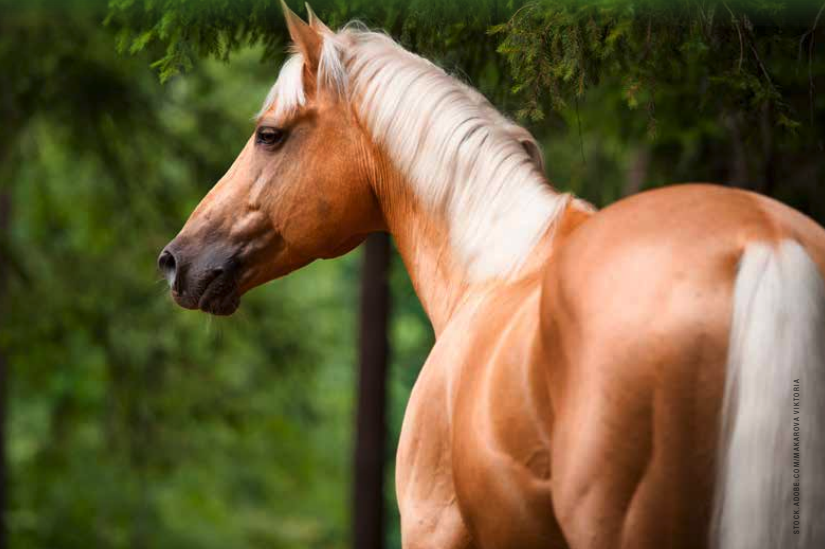Q&A: Managing a rare skin disease
- August 2, 2023
- ⎯ Equus
Q: My Paint gelding, Trooper, was diagnosed with pemphigus foliaceus in January, and since then we’ve been on a bit of a roller coaster managing this rare skin disease, but we are not giving up. I’ve been trying to learn more about this condition. However, there is very little information available (and I agree that research money is better spent on more common ailments like colic and laminitis). We owners of horses with this condition may be few and far between, but I bet we’d all like to learn more about it. Can you help?

A: Pemphigus foliaceus (PF) is an autoimmune disorder in which the body’s immune system attacks the proteins that adhere together the cells of the skin surface (the epidermis). As these epidermal cells come “unstuck” from each other, blistering develops, which turns into crusts and hair loss. The crusting frequently starts on the face and legs and then becomes generalized over the body. Crusts may also occur only on the coronary bands. The lesions can be painful.
Peripheral edema (“stocking up”) is also common, and these horses are likely to have a low-grade anemia (lower than normal numbers of red blood cells) as well as leukocytosis (an elevated count of white blood cells). Horses may also develop fever, depression, lethargy and occasionally weight loss.
The cause of the disease is unknown. Here at the University of California–Davis, PF is the most common cause of noninfectious crusts in horses, and it is the second most commonly seen autoimmune skin disease in the horse, after purpura hemorrhagica. Earlier studies suggested that PF might be bimodal, developing only in horses younger than a year old or in those over the age of 8. However, we have since found that PF can occur in horses of any age.
Likewise, our cases here at UC–Davis do not support a previous assertion that Appaloosas are predisposed to PF. It can develop in horses of any age, gender or breed; we have seen the condition in horses, ponies and Miniature Horses, and it has been reported in donkeys. One recent report from France described a donkey whose PF occurred, then regressed, during two of her five pregnancies.
Interestingly, the cases we’ve seen here did suggest a seasonal onset of PF—more than 80 percent developed between September and February.
A biopsy is necessary to diagnose PF and to distinguish this disease from other conditions that cause similar-looking crusty, hairless lesions, including insect hypersensitivity and bacterial or fungal infections, such as ringworm. PF is not contagious.
PF is treated with drugs that suppress the immune system. Corticosteroids, such as prednisolone and dexamethasone, are often used, although these must be administered cautiously because they can have serious side effects, including laminitis. Often we’ll start on higher doses to attempt to bring the disease under control, then taper off to a maintenance dose.
Anecdotal reports state that a gold salt (aurothiomalate) can be helpful, administered once weekly until the lesions wane, and then monthly thereafter. However, this drug is ex-pensive, and it also carries a slight risk of serious side effects, including kidney disease.
Another immunosuppressant drug that might be helpful is azathioprine, which is used for various autoimmune skin diseases in horses. A low platelet count is one possible side effect of this drug; however, I have used azathioprine investigatively in eight healthy horses with no deleterious effects. I use this drug, which is administered daily, to eventually decrease the amount of corticosteroids needed. It costs approximately $300 per month for an average adult horse.
The prognosis for PF is guarded until we see how the horse responds to the medications. The goal is always to achieve full remission of the clinical signs, but treatment is lifelong in at least 75 percent of affected horses. Some horses with this disease can be ridden, depending on whether long-term medications are needed and where the lesions are on the body (the saddle and girth area versus the face or legs).
Perhaps as many as 25 percent of horses can eventually be taken off of all medications, although recurrence is a possibility. Probably 20 percent are euthanatized, either because they have not responded to drug treatments or due to side effects such as laminitis.
Stephen D. White, DVM, DACVD
University of California–Davis
Davis, California
This article first appeared in EQUUS issue #448
Don’t miss out! With the free weekly EQUUS newsletter, you’ll get the latest horse health information delivered right to your in basket! If you’re not already receiving the EQUUS newsletter, click here to sign up. It’s *free*!





